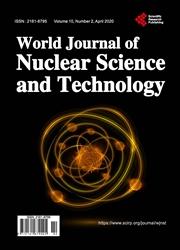Analysis of Residence Time in the Measurement of Radon Activity by Passive Diffusion in an Open Volume: A Micro-Statistical Approach
引用次数: 4
Abstract
Residence time in a flow measurement of radioactivity is the time spent by a pre-determined quantity of radioactive sample in the flow cell. In a recent report of the measurement of indoor radon by passive diffusion in an open volume (i.e. no flow cell or control volume), the concept of residence time was generalized to apply to measurement conditions with random, rather than directed, flow. The generalization, leading to a quantity Δtr, involved use of a) a phenomenological alpha-particle range function to calculate the effective detection volume, and b) a phenomenological description of diffusion by Fick’s law to determine the effective flow velocity. This paper examines the residence time in passive diffusion from the micro-statistical perspective of single-particle continuous Brownian motion. The statistical quantity “mean residence time” Tr is derived from the Green’s function for unbiased single-particle diffusion and is shown to be consistent with Δtr. The finite statistical lifetime of the randomly moving radioactive atom plays an essential part. For stable particles, Tr is of infinite duration, whereas for an unstable particle (such as 222Rn), with diffusivity D and decay rate λ, Tr is approximately the effective size of the detection region divided by the characteristic diffusion velocity . Comparison of the mean residence time with the time of first passage (or exit time) in the theory of stochastic processes shows the conditions under which the two measures of time are equivalent and helps elucidate the connection between the phenomenological and statistical descriptions of radon diffusion.开放体积被动扩散法测量氡活度时停留时间的分析:微观统计方法
放射性流动测量中的停留时间是预先确定数量的放射性样品在流动池中所花费的时间。在最近的一份报告中,通过在开放体积(即没有流动池或控制体积)中被动扩散测量室内氡,将停留时间的概念推广到适用于随机流动而不是定向流动的测量条件。推广,导致一个量Δtr,涉及使用a)一个现象学α粒子范围函数来计算有效检测体积,b)菲克定律扩散的现象学描述来确定有效流速。本文从单粒子连续布朗运动的微观统计角度研究了被动扩散中的停留时间。统计量“平均停留时间”Tr由无偏单粒子扩散的格林函数推导而来,与Δtr一致。随机运动的放射性原子的有限统计寿命起着至关重要的作用。对于稳定粒子,Tr为无限大的持续时间,而对于具有扩散率D和衰减率λ的不稳定粒子(如222Rn), Tr约为检测区域的有效尺寸除以特征扩散速度。在随机过程理论中,平均停留时间与首次通过时间(或退出时间)的比较显示了两种时间度量是等价的条件,并有助于阐明氡扩散的现象学和统计学描述之间的联系。
本文章由计算机程序翻译,如有差异,请以英文原文为准。
求助全文
约1分钟内获得全文
求助全文

 求助内容:
求助内容: 应助结果提醒方式:
应助结果提醒方式:


